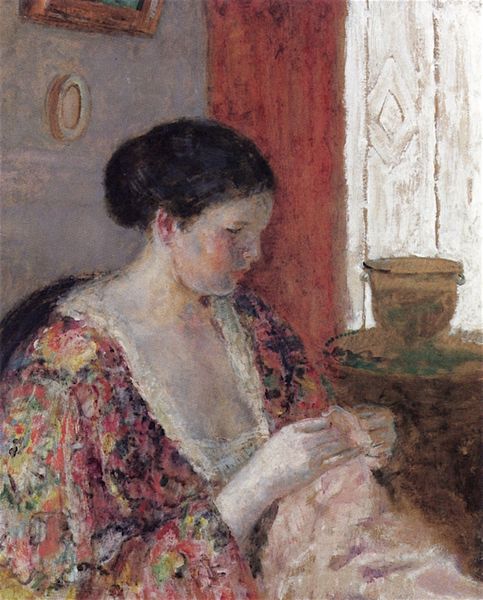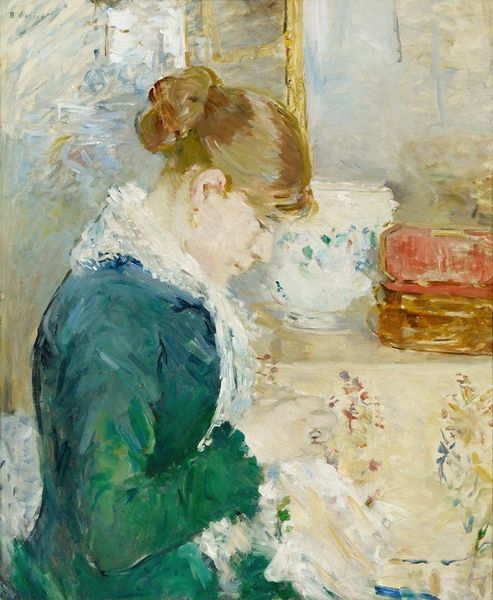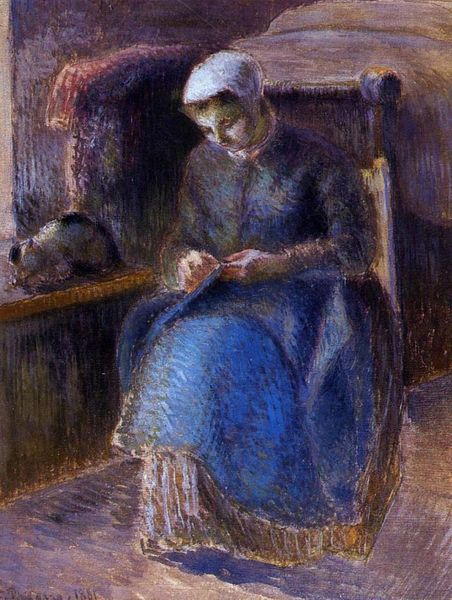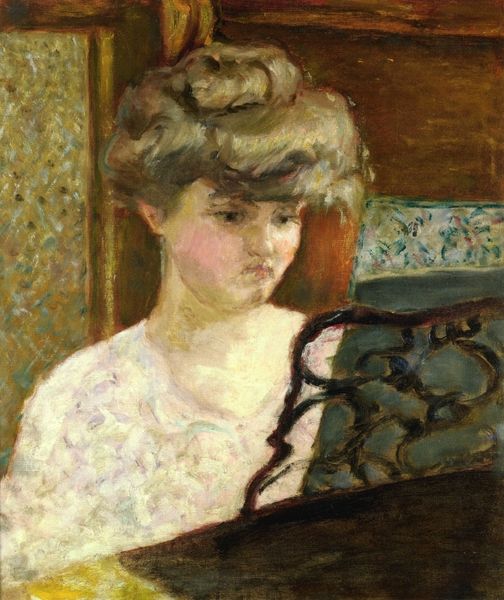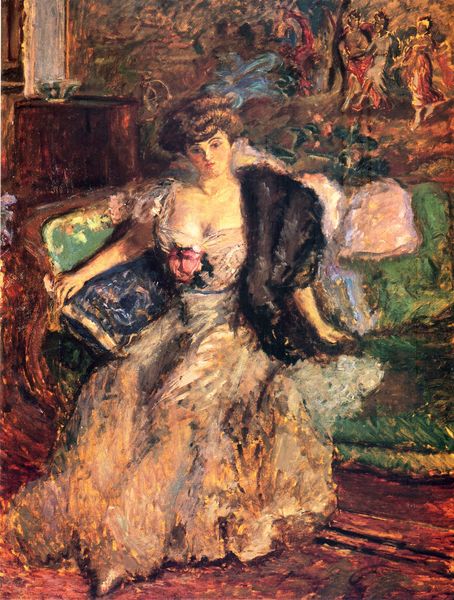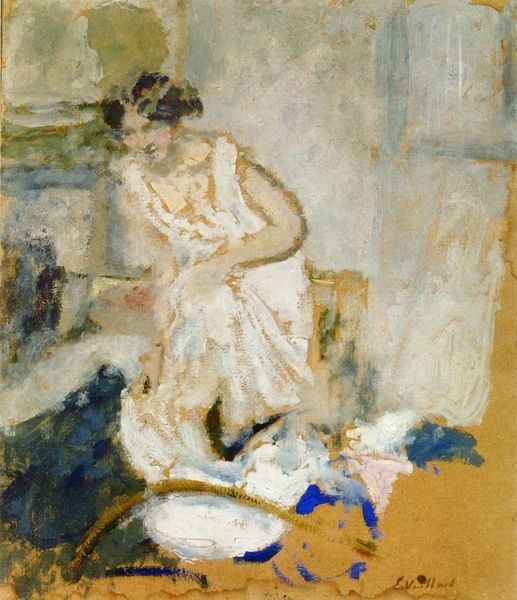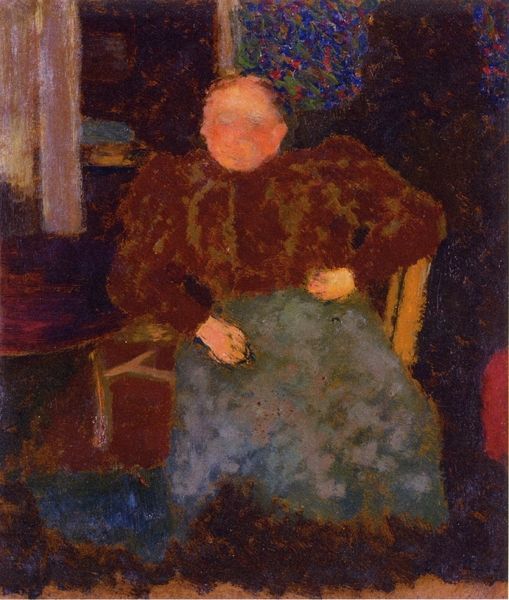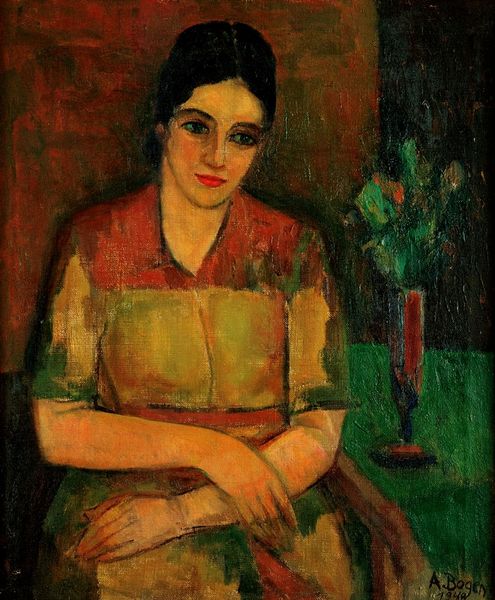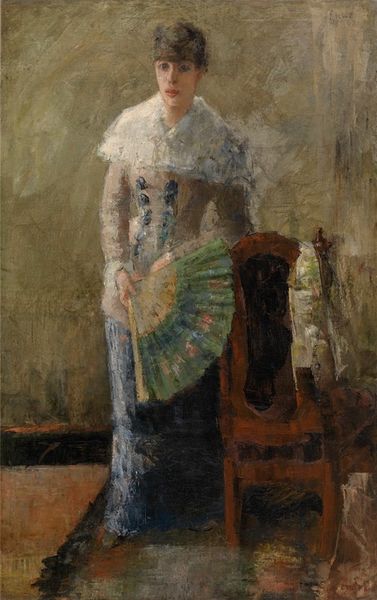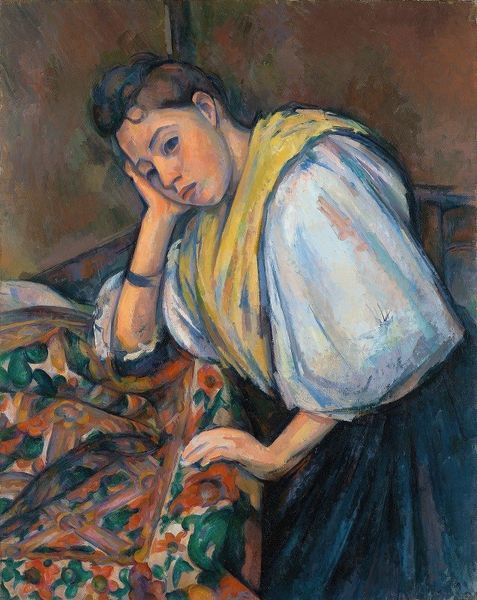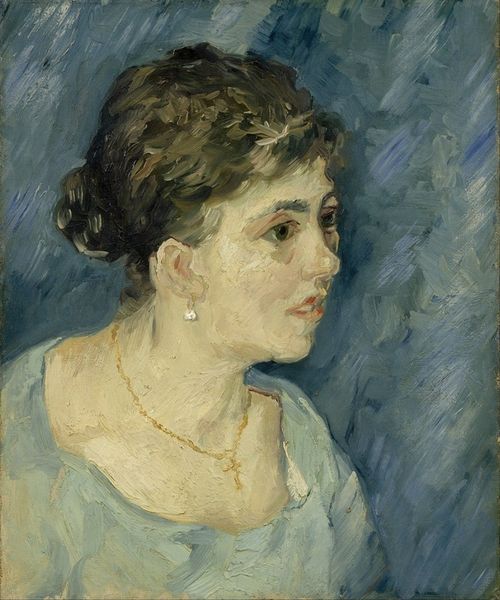
oil-paint
#
portrait
#
figurative
#
impressionism
#
oil-paint
#
figuration
#
oil painting
#
post-impressionism
Copyright: Public Domain: Artvee
Paul Gauguin painted this portrait of his wife Mette in the late 1870s using oil on canvas. The painting offers insight into the artist's early career and the social dynamics of the time. Gauguin was a stockbroker before he was a full-time artist, and this portrait reflects the bourgeois life he inhabited. The muted tones and domestic setting evoke a sense of quiet respectability expected of women in 19th-century Parisian society. Yet, the loose brushwork hints at Gauguin’s growing interest in Impressionism and his emerging avant-garde sensibilities. The painting also speaks to the institutional structures shaping art at the time. Gauguin initially exhibited in the official Salon, but he grew dissatisfied with its conservative constraints and helped to organize alternative exhibitions that would soon challenge those artistic norms. Through close examination of Gauguin’s personal history, as well as the art criticism of the period, we can better understand the complex interplay between artistic innovation and social expectations in late 19th-century France.
Comments
No comments
Be the first to comment and join the conversation on the ultimate creative platform.
